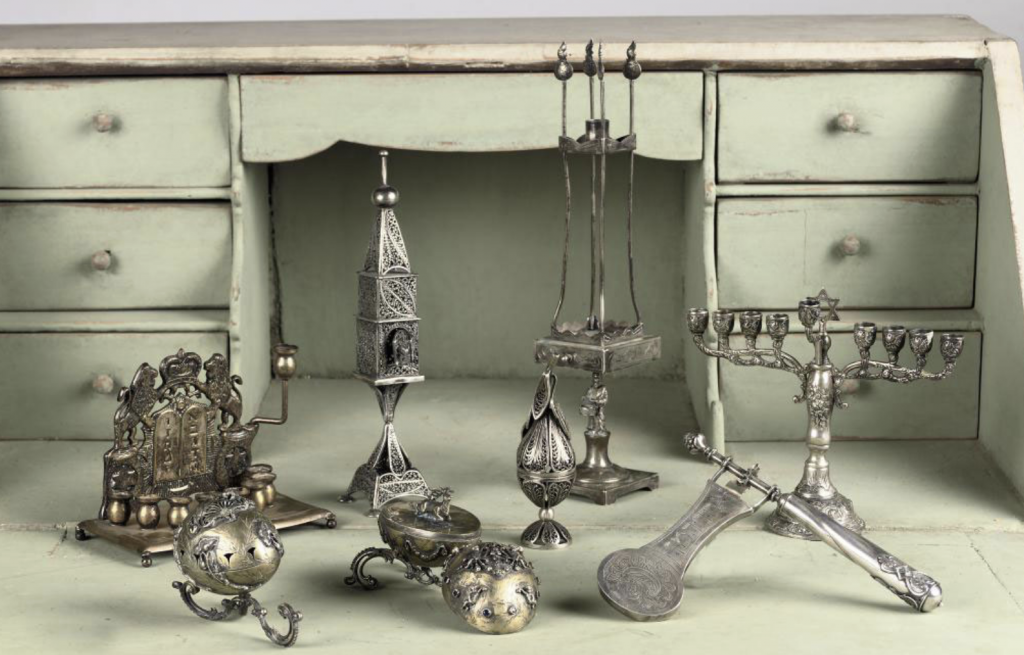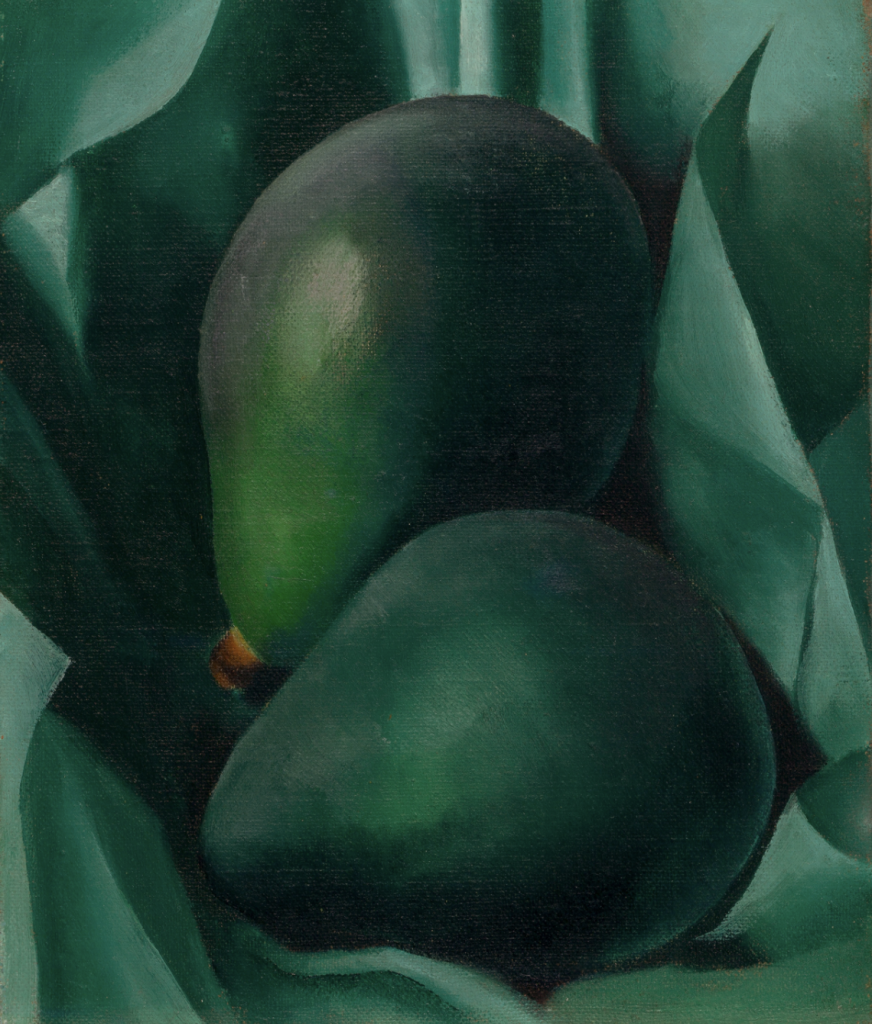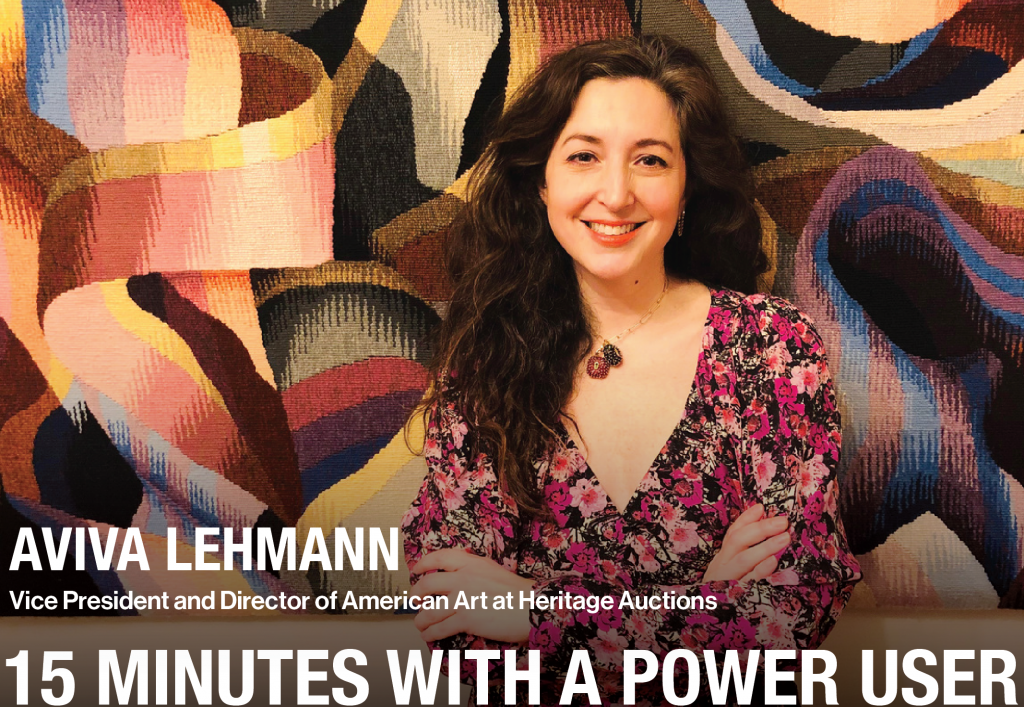There is only one tool trusted by art-world insiders to buy, sell, and research art: the Artnet Price Database. Its users across industries—from auction houses to museums, galleries, and government institutions—represent the art world’s most important players. We’re taking 15 minutes to chat with some of the Artnet Price Database’s power users to get their take on the current state of the market and how they’re keeping up with the latest trends.
Few art world professionals can say they have worked as a curator, auction house specialist, and professor over the course of their careers, but Aviva Lehmann is just such a multi-hyphenate. After starting out as a curator at the Jewish Theological Seminary, she found her way to Christie’s when the auction house needed a Hebrew speaker to work on a sale of Judaica.
“From there, I got a job at the front counter, answering phones and opening mail—and I ended up staying for 14 years, working my way up to vice president in American art,” Lehmann says. After leaving Christie’s, she headed to Heritage Auctions, in 2013, where she now serves as vice president and director of American art.
In the midst of her busy schedule at the auction house, Lehmann also finds time to teach appraisals and valuation to students in New York University’s art administration program. All of which is why Lehmann is the ideal person to chat about everything from the market for American art to how she uses the Artnet Price Database. Read on to learn more.
We learned that you doubled the value of the American art mid-season sales at Christie’s while you were the head of the sale, from 2004 to 2006. To put it simply: How did you do that?
I understood pretty early on that when someone has a work of art to sell, often it can be an emotional experience. For private collectors, art can feel like a family member, especially when the material is inherited. I also understood that a great painting will sell well anywhere, but you want to make sure that the seller enjoys the experience, from start to finish. An auction specialist must be an appraiser and a salesperson, but also a therapist, friend, and whatever else the client needs. This works for buyers as well, which is why clients still call me to advise on works being offered at Christie’s even though I haven’t been there for more than eight years. I think it was my personal approach that helped secure the consignments and make the sales, leading to this jump in sale value.
During college, you worked as a curator of Judaica at the Jewish Theological Seminary. Do you have any advice for how an institution or collector should go about building a collection of religious objects?
This is a really tricky marketplace, with many forgeries and misattributions (often with questionable provenance) circulating in the market. First and foremost, curators and collectors must find an advisor who can help then navigate all of this—which is very tricky in my experience. I still help out with any religious objects that come through Heritage, but I try to do it only as needed, as American art is my true passion.

A collection of silver Judaica that sold at Christie’s. Image courtesy of Christie’s.
You’re now at Heritage Auctions, headquartered in Dallas. How does Heritage differentiate itself from other players in the market?
We are the largest American auction house, and the largest collectibles house in the world. We offer material in more than 40 categories, selling everything from domain names to Hermès bags, from comic art to contemporary art, coins to sports memorabilia. Frankly, I was amazed to see the breadth of material being offered when I first joined Heritage.
What I learned quickly is that we have all the usual buyers that I knew from Christie’s, but we have so many others who feel most comfortable, perhaps less intimidated, working with such a thoroughly American house. For instance, I sold a Norman Rockwell work a few years back to a billionaire I had never met—he was a Heritage client because he was mainly a vintage movie-poster collector. I realized then that Heritage offers the art world a very refreshing, down-to-earth approach to selling fine art. We also post our reserves, which to me seems like such an industry disruptor: What you see is what you get. No chandelier bidding, no smoke and mirrors. We are fully transparent in every way, and I find that this empowers our buyers and sellers.
In addition to your work at Heritage, you also serve as a professor of appraisals and valuation in the art administration master’s program at New York University. Tell us about the process of art appraisals: What do you look for when appraising a piece of art? And how does the Artnet Price Database come into play?
When appraising art, I will tell you what I tell my students. The five key factors to always consider are condition, provenance, rarity, quality, and current taste. I look at auction comparables all day. I literally have Artnet open on my computer at any given hour. Artnet is really the best database because you can get very specific in your search. You can search by medium, size, date, etc. For instance, if I want to look up auction records for a John Marin watercolor executed between 1921 and 1928 measuring between seven to 11 inches in height, Artnet is the only database that works. It is such a useful tool.

Georgia O’Keeffe, Alligator Pears (circa 1923), sold at Heritage Auctions in 2014. Lehmann recalls the sale of this painting as one of her favorites to date. Image courtesy of Heritage Auctions.
Over the course of your career, how have you seen the market for American art change?
When I first began working in American art, the Modernists, the Impressionists, and Hudson River School works were the big-ticket items. Today the star, hands down, is Golden Age illustration. We used to put illustration at the back of the catalogue, and now, you cannot go through a sale season without seeing a Rockwell on a cover. I remember when Rosie the Riveter sold at Sotheby’s in 2002 for around $5 million—that seemed like a huge price at the time. Just seven years later, in 2009, Crystal Bridges in Bentonville, Arkansas, acquired the work privately for a reported $25 million. Now the work is one of the most popular in the entire museum, as much of a draw as Frederic Church’s Kindred Spirits. The painting increased in value by more than five times in just seven years. Aside from contemporary art, what other area of art even comes close to such appreciation in value?
Do you have any predictions for where the market for American art will be five years from now?
I see the prices for secondary and tertiary Golden Age Illustrators going up. As they say, high tide raises all ships, right? I predict that we will see a Joseph Christian Leyendecker hit the seven-figure mark—and I hope to be the one to make that happen.
What was your most memorable sale?
At Christie’s, it has to be the May 2008 auction when we sold a Thomas Moran work for more than $17.7 million against a $3 million to $5 million estimate. That was wild! At Heritage, it was the Barry King collection of early American Modernism in 2014. I loved the Georgia O’Keeffe, Alligator Pears.
What was the last thing you searched for in the Artnet Price Database?
I looked up some Rockwell Kent prints.








